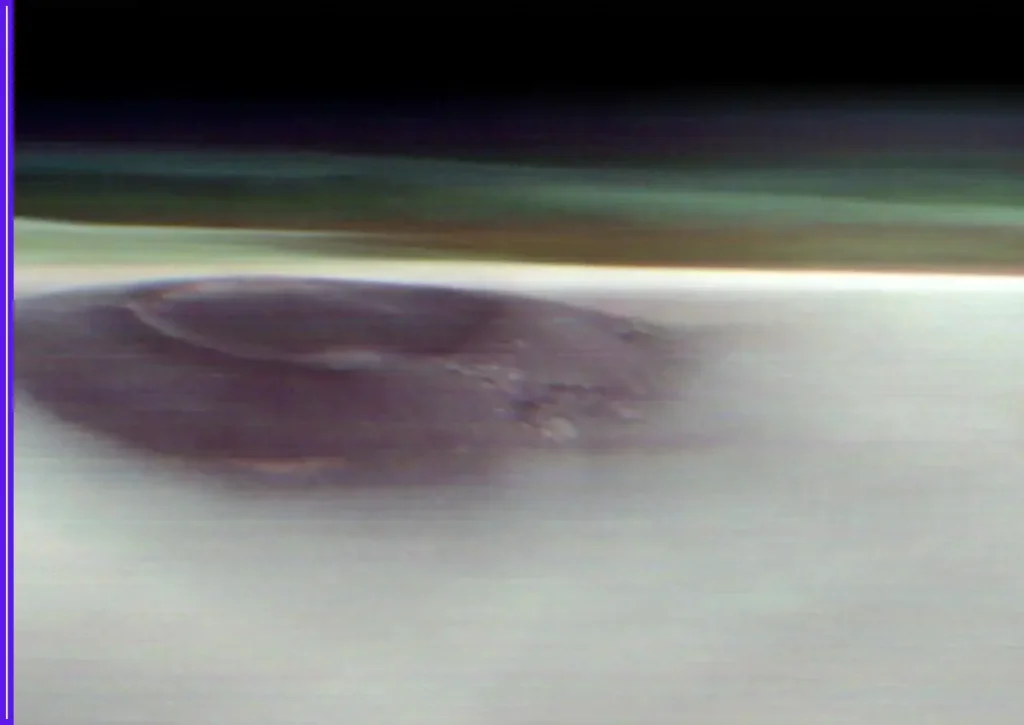NASA has released a breathtaking image of Arsia Mons, one of the largest volcanoes on Mars, captured by the Mars Odyssey spacecraft. Towering at approximately 20 kilometers (12 miles) high—nearly twice the height of Mount Everest—Arsia Mons was seen piercing through a thick layer of water-ice clouds on the Martian horizon.

The image was taken at dawn on May 2, 2025, by Odyssey’s THEMIS camera, which recently underwent a maneuver to photograph the planet’s horizon instead of its surface. This shift enabled NASA scientists to capture the first-ever view of a Martian volcano from this angle.
“This perspective is similar to how astronauts aboard the International Space Station see Earth’s mountain ranges, but here we’re seeing a volcano on another planet,” said Jonathon Hill, mission planner and operations lead for THEMIS at Arizona State University.
Arsia Mons is part of the Tharsis Montes range and features a caldera nearly 110 kilometers wide. The volcano is enveloped in a greenish haze, formed by water-ice clouds that condense as air is pushed up along its massive slopes—a phenomenon similar to Earth’s orographic cloud formations.
NASA scientists say this horizon view will help them study seasonal weather patterns, atmospheric dust, and the distribution of water ice in Mars’ equatorial regions. It also provides new insights into the planet’s climate system and the behavior of the aphelion cloud belt, a recurring band of clouds that forms during Mars’ coldest season.
The Mars Odyssey mission, in orbit since 2001, continues to deliver valuable data for future Mars exploration, including possible human missions that may rely on local resources such as subsurface water ice. Arsia Mons, along with other massive volcanoes on Mars, remains a geological wonder and a key subject in unraveling the Red Planet’s mysterious past.









